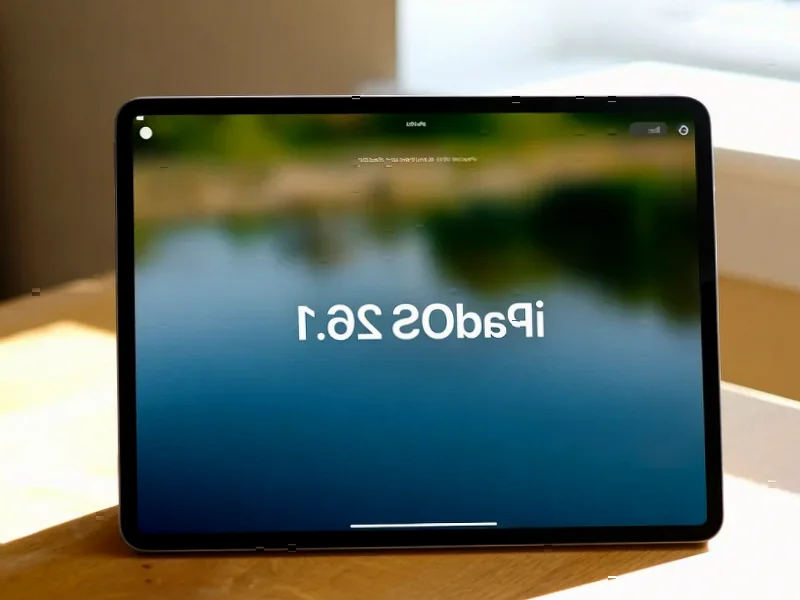According to 9to5Mac, Apple has released watchOS 26.1, tvOS 26.1, and HomePod 26.1 updates with minimal feature additions but significant focus on performance improvements and bug fixes. The watchOS 26.1 release notes specifically mention “improvements and bug fixes” while HomePod 26.1 offers “performance and stability improvements.” The most visible change appears in tvOS 26.1, where the TV app icon has been redesigned with a more colorful, vibrant look as part of Apple’s broader rebranding from Apple TV+ to simply ‘Apple TV.’ These updates follow Apple’s typical pattern of addressing stability issues that emerge after major September software releases, suggesting these are primarily maintenance-focused updates rather than feature-heavy upgrades. This approach to platform management reveals important strategic implications for Apple’s ecosystem evolution.
The Platform Maturity Shift
What we’re witnessing with these incremental updates is Apple’s acknowledgment that its platforms have reached a stage of maturity where reliability often trumps innovation. When watchOS launched in 2015, each update brought revolutionary new health tracking features and interface overhauls. Now, nearly a decade into the platform’s existence, the focus has shifted to refinement and optimization. This mirrors the evolution we’ve seen across Apple’s other platforms – macOS, for instance, has similarly transitioned from dramatic annual redesigns to more measured, stability-focused updates. The consistent pattern of maintenance releases following major version launches suggests Apple has institutionalized this approach across its entire software ecosystem.
Beyond the Surface: Ecosystem Integration Strategy
The subtle TV app rebranding from Apple TV+ to Apple TV is more significant than it appears. This isn’t just a cosmetic change – it represents Apple’s ongoing effort to unify its streaming, purchasing, and discovery experiences under a single brand identity. By eliminating the “+” suffix, Apple is positioning its TV app as the central hub for all video content, whether subscription-based, purchased, or from third-party services. This aligns with Apple’s broader strategy of creating seamless ecosystem integration where users don’t need to think about where content originates. The timing of this rebranding alongside stability-focused system updates suggests Apple is preparing the foundation for more substantial ecosystem enhancements in future releases.
The Unseen Value of Stability Updates
While these updates might seem underwhelming to feature-focused consumers, they represent Apple’s commitment to the user experience fundamentals that often get overlooked. Battery life improvements, smoother animations, and reduced app crashes might not make for exciting marketing materials, but they directly impact daily usability. Apple’s decision to prioritize these improvements reflects their understanding that a stable platform is essential for maintaining user trust and engagement. The company’s consistent delivery of maintenance updates between major releases has become a key differentiator in an industry where many competitors struggle with software stability.
What This Signals for Apple’s 2024 Roadmap
Looking ahead, these maintenance-focused updates suggest Apple is clearing technical debt and stabilizing platforms ahead of more ambitious 2024 initiatives. With rumors of significant AI integration, potential mixed reality ecosystem expansion, and health platform enhancements, Apple needs rock-solid foundation software to support these innovations. The pattern we’re seeing – major features in September releases followed by stabilization in subsequent updates – indicates Apple is methodically building toward something more substantial. Rather than viewing these minor updates as insignificant, we should see them as essential preparation phases for the platform evolution that typically accelerates during Apple’s annual developer conference cycle.




